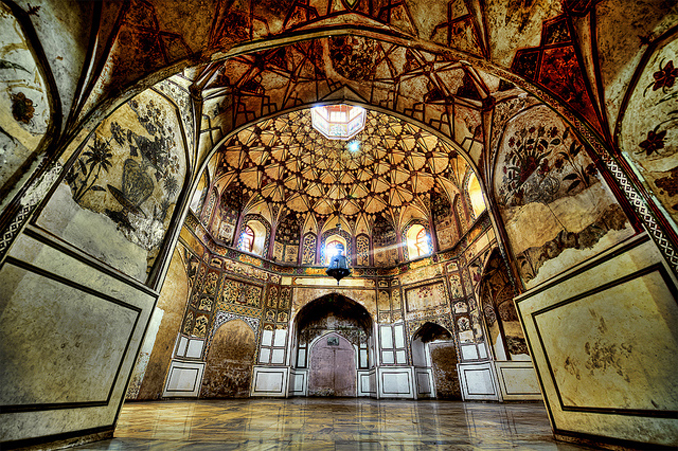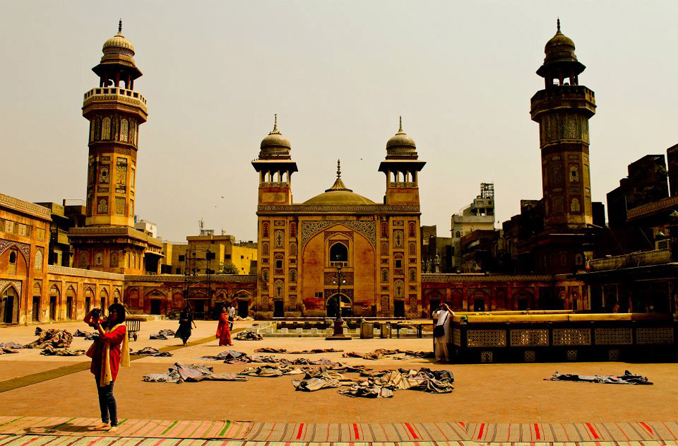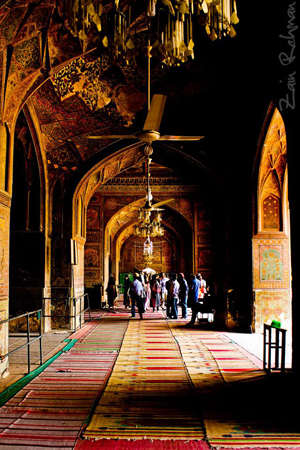Written by: Salma Chaudhry - Posted on: July 25, 2014 |  Comments | 中国 (Chinese)
Comments | 中国 (Chinese)
Google Translation: اُردو | 中文
Androon Shehr Lahore is the complicated town of ancient Lahore that was built centuries ago, with its large walls and huge gates constructed to serve as a defence mechanism against invaders. This “Walled City” had 13 gates, which were built over a long time period of time, especially by the Mughal kings. Most of these gates were destroyed when the British annexed Punjab. However, some of the gates still exist today in remembrance of the past, though no longer for protective purposes.
The Walled City Lahore Authority (WCLA) recently renovated the Delhi Gate (locally known as the Dilli Darwaza) as part of its Sustainable Development of the Walled City Project. The objective of these initiatives is to revive tourism as well as bring to the fore the fortitude and endurance that these wonderful structures possess. There’s nothing like walking around the old Lahore discovering stunning architecture, beautiful stories and meeting the sincerest of people. Androon Shehr has a culture of its own, much different from what you witness in the rest of the city and Delhi Gate remains one of the most happening places in the Androon.
The city of Lahore has seen many ups and downs, and in the slender streets of the Androon, one can still discover remains of the city’s splendid past. Though most of the buildings and walls have disintegrated, it is not hard to envisage the magnificence of the olden times by walking through the many commanding and gorgeous structures that have endured the harsh weathers and wars. The Delhi Gate or the Dilli Darwaza was built by the Mughal Emperor Jalaluddin Mohammad Akbar (1556-1605). The name Delhi comes from the fact that the gate faces and opens towards Delhi, which was the capital of the Mughal Empire during Akbar’s reign.
 |
Shahi Hamam (Image provided by WCLA) |
As one walks through the majestic entrance, the Shahi Hamam or the Royal Bath on the left attracts particular attention. Built specifically for steam and hot baths, the hamam is a marvelous piece of architecture. The WCLA is currently restoring it with assistance from the Norwegian Government and the Agha Khan Trust. The most striking feature of the hamam is the heating system that was put in place in those times. Water would pass through brass pipes and fires lit under them would convert it into steam. The hamam is a huge structure with twenty one rooms and the ornamentation inside includes beautiful floral patterns similar to the ones found in the Wazir Khan Mosque. The Hamam is also known as Wazir Khan Hamam as it was built by Hakim Ilmuddin or Wazir Khan in 1633.
Delhi Gate is famous for its cloth market and a number of old havelis whose amazing architecture takes the visitors by surprise. Though lying in a crumbled state, an ancient Hindu Mandir (temple) ‘Shawala Baba Bhakar Guru’, is also located in the gate. The Landa Bazar (flea market) across the gate sells recycled clothes at economical rates and remains one of the greatest attractions for a large section of the population.
However, the most striking and beautiful place near the gate is the Wazir Khan Mosque, which is a short walk from the Delhi Gate, through the narrow lanes. Commissioned by Hakim Ilmuddin in 1634/1635, and built in seven years, it is one of the most stunning creations of the Mughal Empire.
 |
Wazir Khan Mosque (Image provided by Zain Rehman) |
 |
Image provided by Zain Rehman |
Any visitor would be awestruck by the elaborate frescoes adorning every inch of the mosque, illustrating many aspects of the Islamic creed as well as some gorgeous geometrical patterns. Fresh lotus buds and pots are scattered all over in a number of colors. Geometric patterns, floral designs and frescos define Mughal art and architecture and can be observed in other buildings such as the Lahore Fort. The mosque is an octagonal structure right in the middle of Wazir Khan Chowk and stands out as it has been built on a platform to avoid inundation from the River Ravi during flooding. The architecture of the mosque is stimulating, overwhelming, and powerful but the view from the top minaret of Wazir Khan takes one’s breath away. On one side you can gaze directly into the courtyard of the mosque while on the other side, you can observe the busy, bustling street which is filled with little shops. This structure is an architectural marvel. Another feature of the Wazir Khan Mosque is the countless grey-colored pigeons that are seen on the minarets. It is a breathtaking sight to see them flutter their wings and take off together at one time. The mosque has been built slowly over the years, lending an eclectic feel to the design, with particular attention paid to the minarets and ornamentation.
The Walled City Lahore Authority is paying particular attention to this Gate owing to its rich architectural history. The renovation of the hamam and bazaars will be finished in the coming months and the visitors will then be able to witness the restored glory of the Delhi gate, or the Dilli Darwaza as the locals would call it.